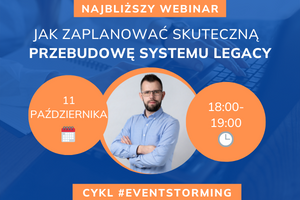Internet is full of articles and videos explaining the distinction between these two terms to varying degrees of accuracy. But what do they really mean?
What Problem Are We Solving?
In our work, we often focus solely on the results of our tasks. We measure how much we “produced” today, how many tasks we completed, or how many emails we sent.
This task-focused approach, instead of increasing productivity as expected, can lead to a cascade of problems. This happens because it overlooks a crucial element – the real impact of our work on achieving long-term goals. The work itself is easy to measure and identify, but it does not always translate into positive, or even any, results.
How does this look in practice?
- Marketing A marketing department generating a large amount of content without a strategy focused on reaching a specific target audience may not achieve the intended effect at all. The work of creating content does not necessarily translate into increased sales or brand awareness.
- Software Industry A development team focused on rapidly releasing new features without considering their usefulness to the end user. This leads to overly complicated and difficult-to-use software that “doesn’t deliver.”
What to do then?

Output vs. Outcome
In English, there is, fortunately, a very clear distinction between those terms.
- Output – something we have already done, regardless of whether the result is positive or negative. It usually describes our actions.
- Outcome – a positive result triggered by specific actions. We see how it benefits us.
Output vs. Outcome in Practice
An examples of this distinction for a sales team would look like this:
- Output – making 100 phone calls.
- Outcome – convincing 5 customers to purchase a product.
Or for a marketing agency:
- Output – publishing 8 articles per month on the company blog.
- Outcome – acquiring 3 new leads who contact through the form.
And from our software industry:
- Output – implementing a product recommendation feature in an online store.
- Outcome – increasing the shopping cart value by 20%.
Both sides are equally important. But unfortunately, we usually focus only on the first one.
Why Make the Distinction?
Now that we understand the basics, why do we need this? 😃
Focusing on “outcome” allows for more precise and valuable goal-setting, leading to positive results that genuinely impact business success. “Outcome” takes into account the added value that actions bring to customers, the business, or society as a whole.
Motivation is also essential. The work we do has a real impact on achieving set goals, significantly increasing employee motivation and engagement. This translates into higher productivity, better work quality, and overall job satisfaction.
Distinguishing between “output” and “outcome” also enables a more precise assessment of actions' effectiveness and success measurement. Instead of focusing solely on the number of units produced or tasks completed, organizations can evaluate how these actions contributed to achieving strategic goals.
How to Ask?
This is a good question. We ask about output and outcome in different ways. It’s worth starting from the end.
Questions about outcome:
- What do we want to achieve by delivering this feature?
- What goal do we aim to accomplish?
- What problem will we avoid?
- Will the solution impact the customer, the business? How?
- What revenue will we generate with this solution?
Questions about output:
- What solution do we need to deliver?
- What is the function that meets a given outcome?
- Does this solution relate to a specific goal?
What Next?
If you’d like to better understand this distinction, I recommend the book Outcomes Over Output.



